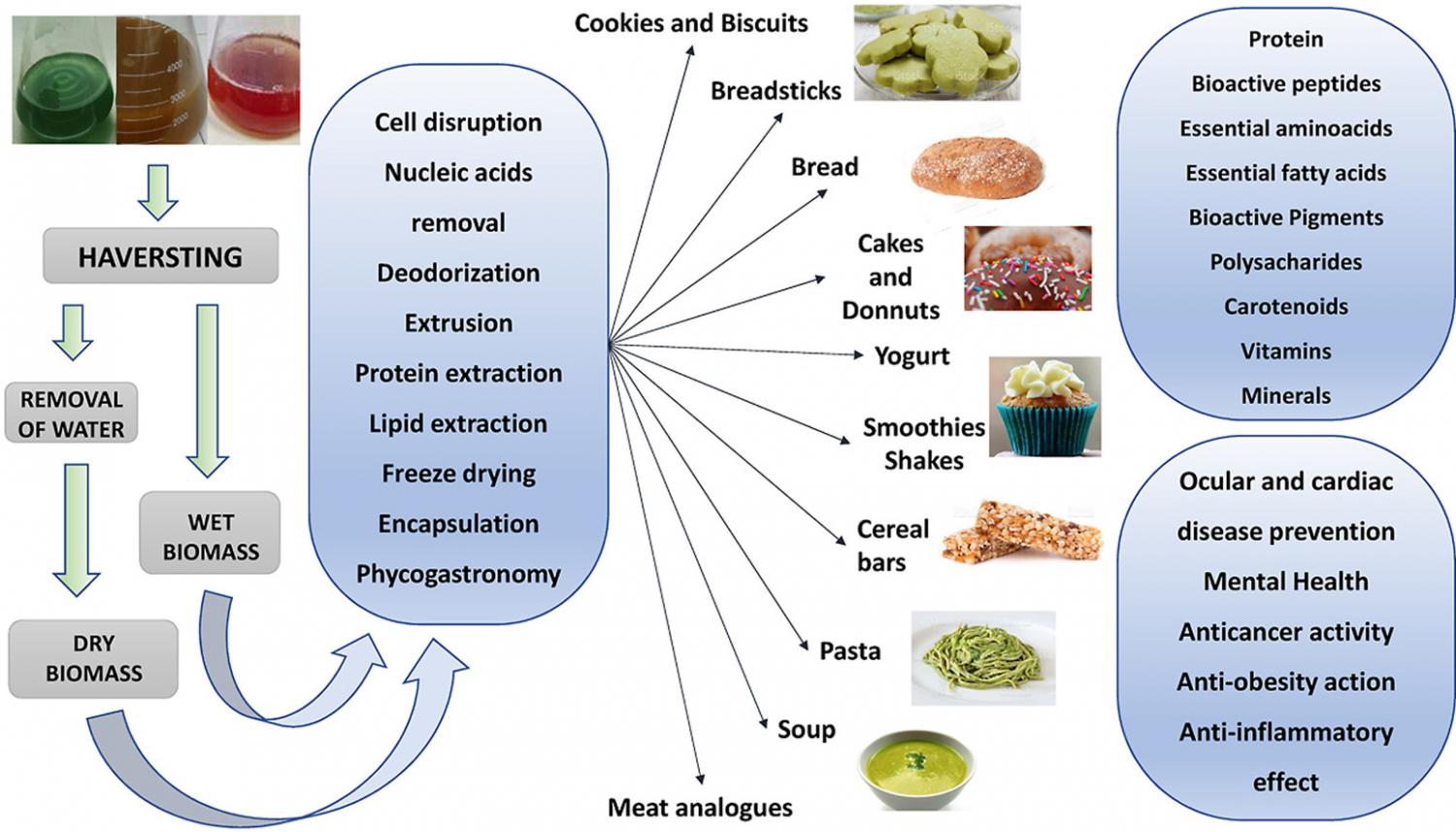
Elsevier, Trends in Food Science and Technology, Volume 125, July 2022
Background: The environmental and social problems associated with increasing world population and industrial development have brought concerns related to water and atmospheric pollution, climate change, as well as the production of staple food. In addition, concerns about healthy food for improving life quality have also increased. Scope and approach: In this review, microalgae composition, nutritional and functional characteristics are detailed for justifying the feasibility of employing their biomass as ingredients in staple foods for human consumption. It also contains information related to technological and sensorial properties of food containing microalgae biomass, such as meat analogue products, biscuits and cookies, pasta, soup, yogurt, bread and other staple foods. Key findings and conclusions: Considering not only the biochemical composition, but also the nutritional and functional features, microalgae biomass seem to be the most promising alternative for sustainable production of ingredients for healthy staple food, comprising vegetarian/vegan diets. This technology allows developing and consolidating Bioeconomy and also helps to achieve some of the U.N. Sustainable Development Goals, such as zero hunger, life on land, life below water, and also responsible consumption and production.
